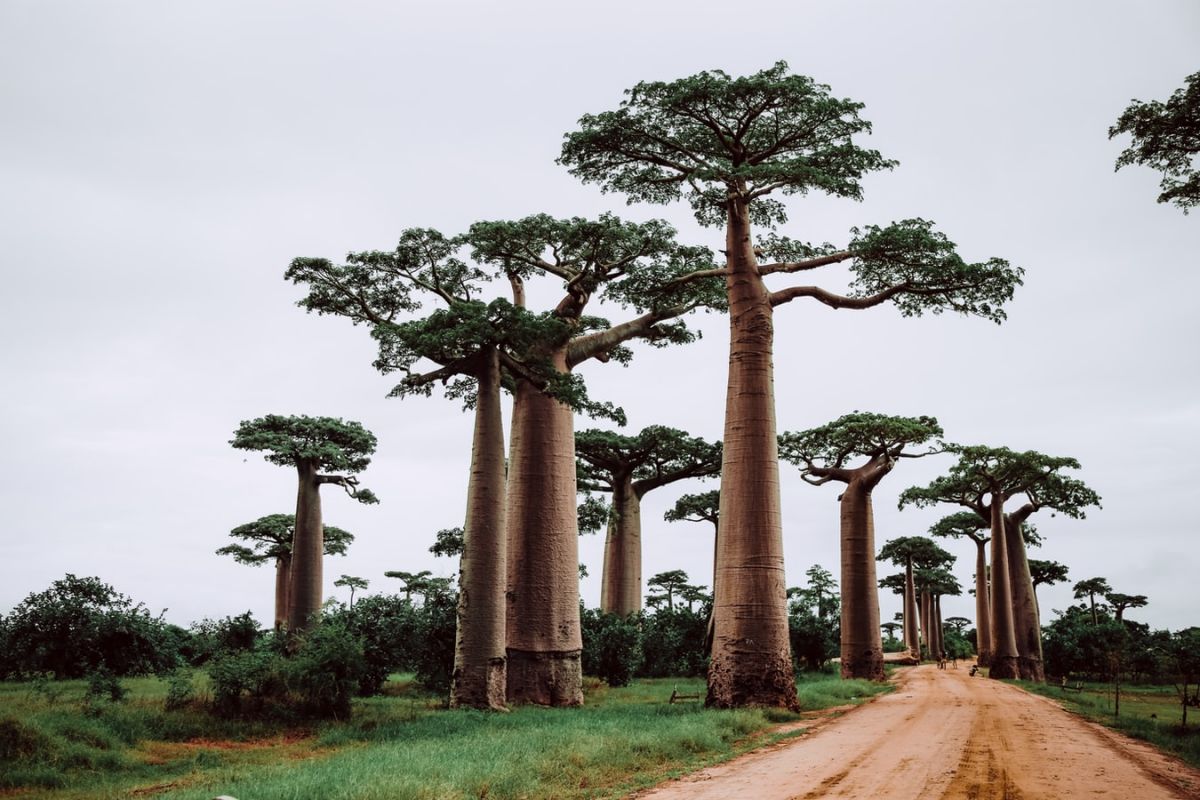
The majestic Baobab tree, also known as the "Tree of Life," is a botanical wonder that holds a special place in the hearts of many cultures across Africa, Madagascar, and Australia. Its unique appearance, with a massive trunk and sparse branches, has sparked countless legends and tales. In this article, we will delve into 15 fascinating facts about the Baobab tree that showcase its remarkable characteristics and the vital role it plays in the ecosystems where it thrives. From its longevity and resilience to its diverse uses in traditional medicine and food, the Baobab tree is a source of wonder and inspiration. Let's embark on a journey to uncover the intriguing secrets of this iconic tree and gain a deeper appreciation for its significance in the natural world.
Key Takeaways:
- The Baobab tree, also known as the “Tree of Life,” is a symbol of resilience and sustenance in Africa, providing food, water, and shelter for humans and animals in arid regions.
- With its massive trunk, ability to store water, and nutritious fruit, the Baobab tree plays a vital role in the ecosystem, inspiring awe and conservation efforts while captivating scientists and researchers.
The Baobab tree is also known as the "Tree of Life."
The Baobab tree is a remarkable tree native to the African continent. It is often referred to as the "Tree of Life" due to its ability to provide food, water, shelter, and traditional medicine for humans and animals. The tree's massive trunk, which can reach diameters of 30 feet, stores water, allowing it to thrive in arid regions. Moreover, its nutritious fruit, leaves, and seeds are valuable sources of sustenance for many communities.
Baobab trees can live for thousands of years.
These majestic trees have an incredibly long lifespan, with some specimens believed to be over 6,000 years old. Their ability to endure for millennia makes them iconic symbols of resilience and longevity in African folklore and traditions.
The Baobab tree's trunk can store thousands of gallons of water.
The tree's unique trunk has the capacity to hold thousands of gallons of water, which is crucial for its survival in dry and arid environments. This adaptation allows the Baobab to thrive in regions with minimal rainfall, making it an essential source of sustenance for both humans and wildlife during droughts.
The Baobab tree has a distinctive appearance.
With its colossal trunk and sparse, yet expansive branches, the Baobab tree presents a striking and unmistakable silhouette on the African landscape. Its unique shape has inspired numerous legends and stories across the continent, adding to its mystique and allure.
Baobab trees are culturally significant.
In many African societies, the Baobab tree holds deep cultural and spiritual significance. It is often regarded as a sacred symbol, with various rituals and ceremonies conducted beneath its expansive canopy. Additionally, the tree features prominently in traditional African art, folklore, and religious practices.
The Baobab tree's fruit is highly nutritious.
The fruit of the Baobab tree, often referred to as "superfruit," is packed with essential nutrients and vitamins. It is known for its high vitamin C content, antioxidants, and other beneficial properties, making it a sought-after ingredient in health and wellness products.
Baobab trees play a vital role in the ecosystem.
These iconic trees provide critical support to their surrounding ecosystems. From offering shelter and sustenance to numerous animal species to enriching the soil through their fallen leaves and fruit, Baobabs play a crucial role in maintaining the ecological balance in their habitats.
The Baobab tree's bark can be used for various purposes.
The fibrous bark of the Baobab tree has been utilized for centuries to create ropes, baskets, clothing, and traditional musical instruments. Its versatility and strength make it a valuable resource for indigenous communities across Africa.
Baobab trees are a popular subject in art and literature.
The distinctive and awe-inspiring presence of Baobab trees has captured the imagination of artists, writers, and storytellers throughout history. Their inclusion in various forms of creative expression has contributed to the enduring fascination with these remarkable trees.
The Baobab tree's pollination is primarily done by fruit bats.
Fruit bats play a crucial role in the pollination of Baobab trees, as they are the primary agents responsible for spreading the tree's pollen from flower to flower. This unique relationship underscores the interconnectedness of the Baobab tree with its surrounding ecosystem.
Baobab trees have been used for traditional medicine for centuries.
The leaves, fruit, and bark of the Baobab tree have been employed in traditional African medicine for their purported healing properties. From treating various ailments to providing relief from common health issues, the tree's medicinal uses have been passed down through generations.
The Baobab tree is a popular tourist attraction.
Due to their awe-inspiring presence and cultural significance, Baobab trees have become sought-after destinations for travelers and nature enthusiasts. Many iconic Baobab specimens have gained international renown and attract visitors from around the world.
Baobab trees have inspired conservation efforts.
Recognizing the ecological and cultural importance of Baobab trees, conservation initiatives have been established to protect and preserve these iconic specimens. These efforts aim to safeguard the future of these ancient trees and the ecosystems they support.
The Baobab tree's seeds are used in various culinary applications.
The seeds of the Baobab tree, known for their nutritious properties, are incorporated into a range of culinary creations. From beverages to traditional dishes, these versatile seeds add a unique flavor and nutritional boost to diverse recipes.
The Baobab tree's sheer size and longevity continue to captivate scientists and researchers.
The remarkable characteristics of Baobab trees, including their immense size and extraordinary lifespan, continue to fascinate and intrigue scientists and researchers. Their study provides valuable insights into the adaptation and resilience of plant life in challenging environments.
The Baobab tree, also known as the "Tree of Life," stands as a symbol of resilience, sustenance, and cultural significance across the African continent. Its iconic stature, remarkable adaptations, and enduring presence have solidified its place in history, folklore, and the natural world. With its ability to thrive in arid regions, provide essential resources, and inspire awe, the Baobab tree remains an enduring testament to the marvels of the natural world.
Conclusion
The baobab tree is a remarkable and iconic symbol of the African landscape, boasting a rich cultural and ecological significance. Its ability to thrive in harsh environments, store water in its trunk, and produce nutrient-rich fruits has made it a valuable resource for both humans and wildlife. From its unique appearance to its diverse uses in traditional medicine and food products, the baobab tree continues to fascinate and inspire people around the world. With its resilience and longevity, the baobab tree stands as a testament to the beauty and adaptability of nature.
FAQs
What is the significance of the baobab tree in African culture?
The baobab tree holds immense cultural significance in Africa, often referred to as the "tree of life" due to its vital role in providing food, water, and shelter for both humans and wildlife. It is also associated with various myths, legends, and spiritual beliefs across different African societies.
How are baobab trees beneficial to the environment?
Baobab trees play a crucial role in the ecosystem by providing habitats for numerous species, contributing to soil fertility, and acting as a source of sustenance during dry seasons. Additionally, their ability to store water in their trunks makes them essential for supporting local biodiversity during periods of drought.
After learning about baobab trees' incredible characteristics, you might be curious about other fascinating aspects of African nature. Explore the wonders of African savannas, where a diverse array of wildlife thrives in harmony with the landscape. Discover the unique adaptations of African plants, which have evolved to survive in challenging environments. Lastly, uncover the secrets of Madagascar, an island nation known for its extraordinary biodiversity and endemic species found nowhere else on Earth.
Was this page helpful?
Our commitment to delivering trustworthy and engaging content is at the heart of what we do. Each fact on our site is contributed by real users like you, bringing a wealth of diverse insights and information. To ensure the highest standards of accuracy and reliability, our dedicated editors meticulously review each submission. This process guarantees that the facts we share are not only fascinating but also credible. Trust in our commitment to quality and authenticity as you explore and learn with us.


